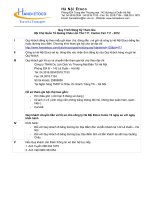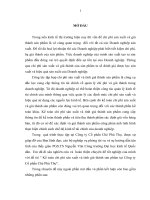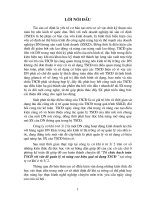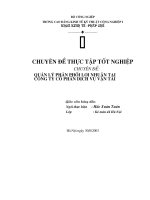geos 111 minerals
Bạn đang xem bản rút gọn của tài liệu. Xem và tải ngay bản đầy đủ của tài liệu tại đây (1.08 MB, 48 trang )
MINERALS
Chemical
composition of the
Crust
Oxygen most abundant- 46.6%
Followed by silicon and
aluminum
Iron, Calcium, Sodium,
Potassium, Magnesium
The most common minerals
will be composed mostly of
these elements
Silica & silicates
MINERAL vs. ROCK
ROCK
An aggregate of one or more MINERALS
(usually- coal, organic)
MINERAL
Solid
Crystalline- orderly arrangement of atoms
Naturally occurring
Inorganic
Definite chemical composition
e.g. SiO2 for quartz; KAlSi3O8 for feldspar
Atom & Elements
Atoms
Neutral
Nucleus
Proton, neutron
Electron
Ions
Electrical Charge
Molecule- e.g. water molecule
Chemical activity
Stable atoms want
positive & negative charges balanced
electron shells full
Ions- positive (Cations) and negative (Anions)
Bonding
Ionic
Covalent
Metallic
Van der Waal’s
Element
Atomic number
Number of PROTONS
Isotope
Differing number of
NEUTRONS
Atomic weight
Mass of PROTONS and
NEUTRONS
Crystallinity
3 dimensional orderliness of atoms
Silicon-oxygen tetrahedron
Silicate structures
Single- e.g. olivine
Chain
Single chain- pyroxene
Double chain- amphibole
Sheet- e.g. mica, clay
Framework- e.g. quartz, feldspar
MINERALS
Crystalline solids
Natural and Inorganic Substances
Definite chemical composition
Can be written as a chemical
formula
Solid solution (within a range)
Important Minerals
Quartz (most abundant)
FELDSPAR Group
Potassium Feldspar - Orthoclase
Plagioclase Feldspar
Sodium (Na) Albite
Calcium (Ca) Anorthosite









